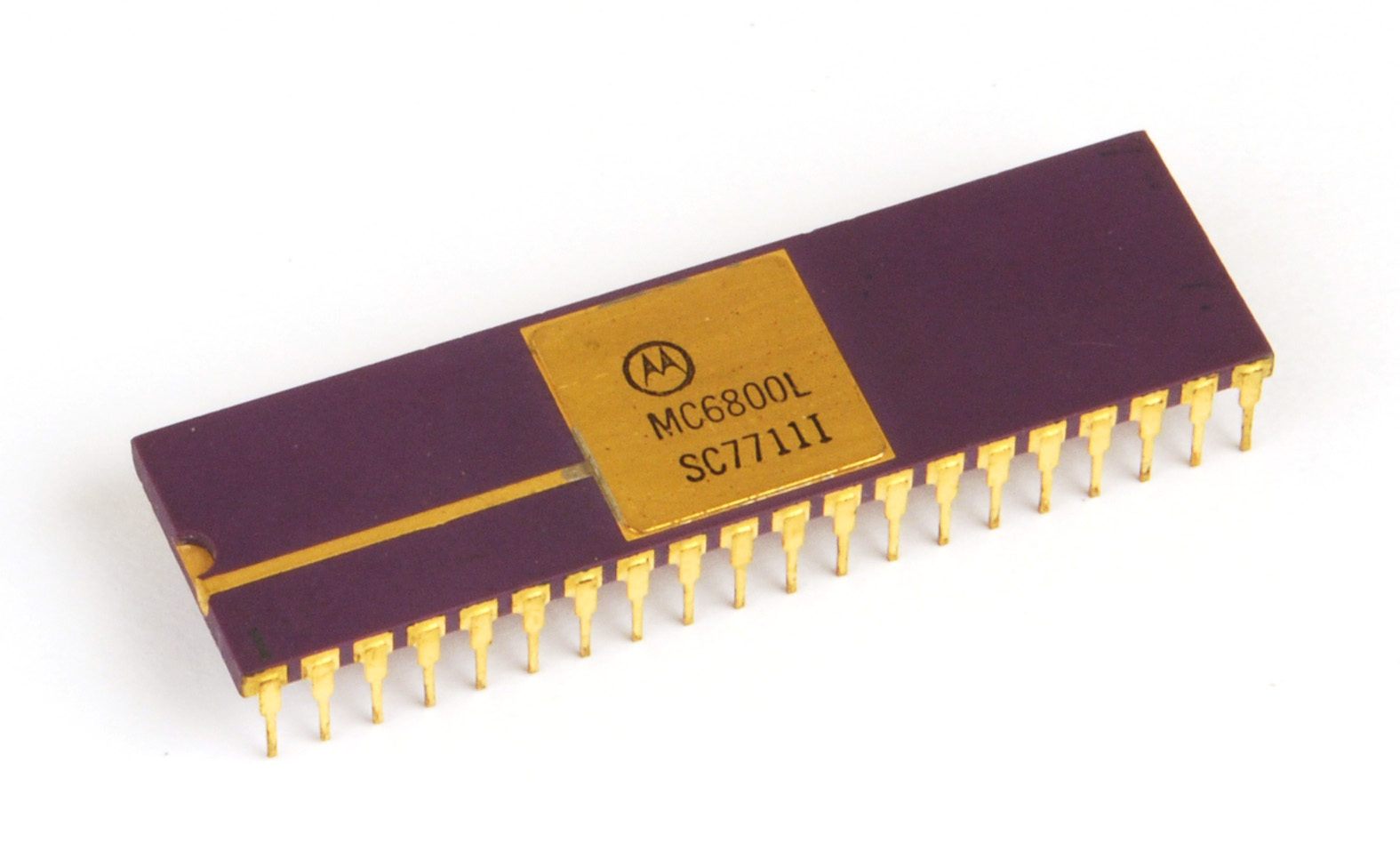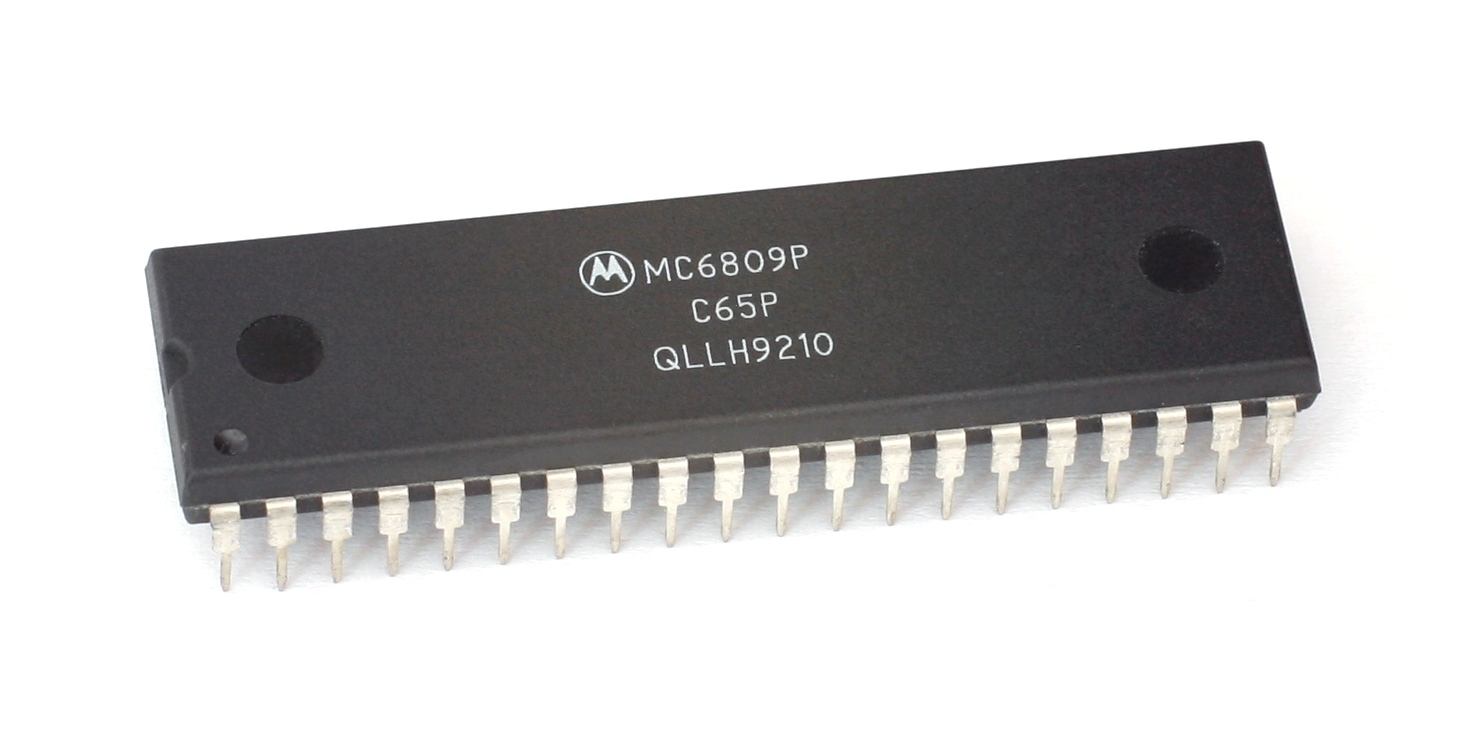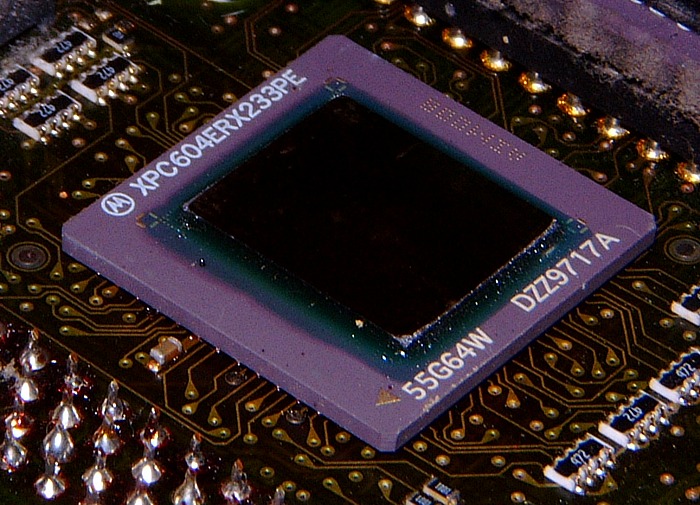| [Motorola Logo, courtesy Wikipedia] |
Abstract:
The Scientific, Education, Engineering, and Server microcomputer markets were once dominated with Motorola based processors. Motorola created the necessary parts for computing platforms, from the power transistors required for switching power supplies, to the plastic coated low-cost semiconductor format which became industry standard, to analog television screens needed for human interaction, to digital HDTV digital screens for modern day human interaction, all the way down to the Central Processor unit with all their additional support chips. Today, we mark the day where America's innovation company, spun-off as Freescale by Motorola, was acquired by a Dutch competitor NXP.
![[68000 microprocessor die, courtesy Wikipedia]](http://upload.wikimedia.org/wikipedia/commons/thumb/f/fe/Motorola_68000_die.JPG/220px-Motorola_68000_die.JPG) |
| [68000 microprocessor die, courtesy Wikipedia] |
History:
A short history of Motorola dating to 2009 can be seen in this PDF. There is not significant concentration on Motorola's contribution to the Computer Industry, so this article completes a short summary of Motorola semiconductor & microprocessor innovations.
1928 - Motorola was started as in Illinois, USA as Galvin Manufacturing Corporation
1947 - Motorola developed their first Television (a requirement for computer monitors)
1949 - Motorola opened up their first Solid State research lab
1955 - The first high powered transistor (core of computer switching power supplies)
1963 - Worlds first rectangular Television (modern computer monitor form factor)
1965 - Developed low cost plastic semiconductor packaging (becomes industry standard)
 |
| [Motorola 6800 Microprocessor, courtesy Wikipedia] |
 |
| [Motorola 6809, Courtesy Wikipedia] |
 |
| [Motorola 68000, courtesy Wikipedia] |
1979 - 68K 68000 16/32 bit hybrid Microprocessor released (used in workstations & servers)
1982 - 68K 68008 8/16/32 bit hybrid Microprocessor supporting inexpensive 8 bit support chips
1982 - 68K 68010 16/32 but hybrid Microprocessor supporting Virtual Memory
1984 - 68K 68020 true 32-bit Microprocessor released (for desktop workstations)
1987 - 68K 68030 released, integrating Memory Management unit (lower cost workstations)
1988 - 88K 88000 released, Motorola's first 32-bit RISC architecture announced
 |
| [Motorola 88100 Processor, courtesy Wikipedia] |
1989 - 68K 68040 released, integrating Floating Point processor (faster workstations)
1990 - Motorola acquired General Instrument Corporation (proposed digital HDTV)
 |
| [Motorola 88110 Processor, courtesy Wikipedia] |
1991 - PowerPC architecture released, a partnership between Apple, IBM, and Motorola
1992 - 88K 88110 first & last processors shipped (succeeded by PowerPC)
1992 - PowerPC 601 32-bit IBM CPU, PowerPC core, on Motorola 88110 bus
 |
| [Motorola PowerPC 603, courtesy Wikipedia] |
1994 - PowerPC 604 32 bit 2nd generation microprocessor released
 |
| [68060 Microprocessor, courtesy Wikipedia] |
1994 - 68K 68060 last 68K compatible processor, instructions optimized in hardware
1994 - 68K ColdFire microprocessor family released, with a simplified 68K core
1995 - 68K DragonBall microprocessor family from Hong Kong, a 68K micro-controller
 |
| [Motorola PowerPC 604e, courtesy Wikipedia] |
1997 - PowerPC 620 64 bit 2nd generation microprocessor released
1997 - PowerPC 7xx 32 bit 3rd generation microprocessor released
2001 - i.MX microprocessor family released, abandoning 68K core for ARM core
| [Freescale Semiconductor logo, courtesy Wikipedia] |
2010 - Kinetis microprocessor family released by Freescale, based upon ARM core
2013 - Kinetis microprocessor developed the worlds smallest processor
2015 - Motorola Semiconductor, which became Freescale, is acquired by Dutch NXP
| [NXP Semiconductor logo, courtesy Wikipedia] |
Conclusion:
The United States was the originator of massive computer industry change over the decades. Motorola was one of the first major computing vendors. Motorola divested their Semiconductor division to Freescale. Freescale largely dis-invested itself from the award-winning Motorola's 68K architectures in favor of British owned ARM RISC architecture. Now, Freescale is gone.
No comments:
Post a Comment